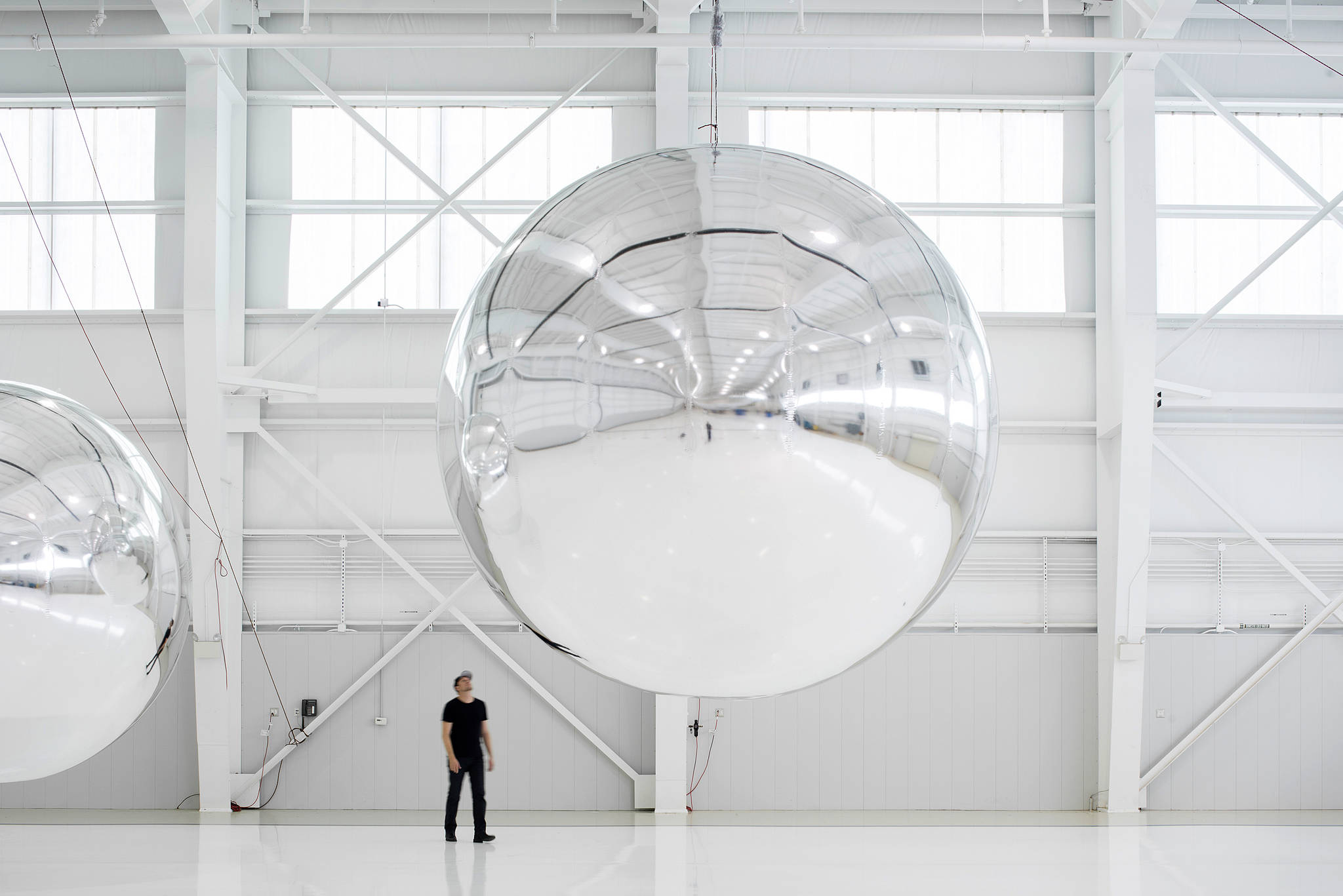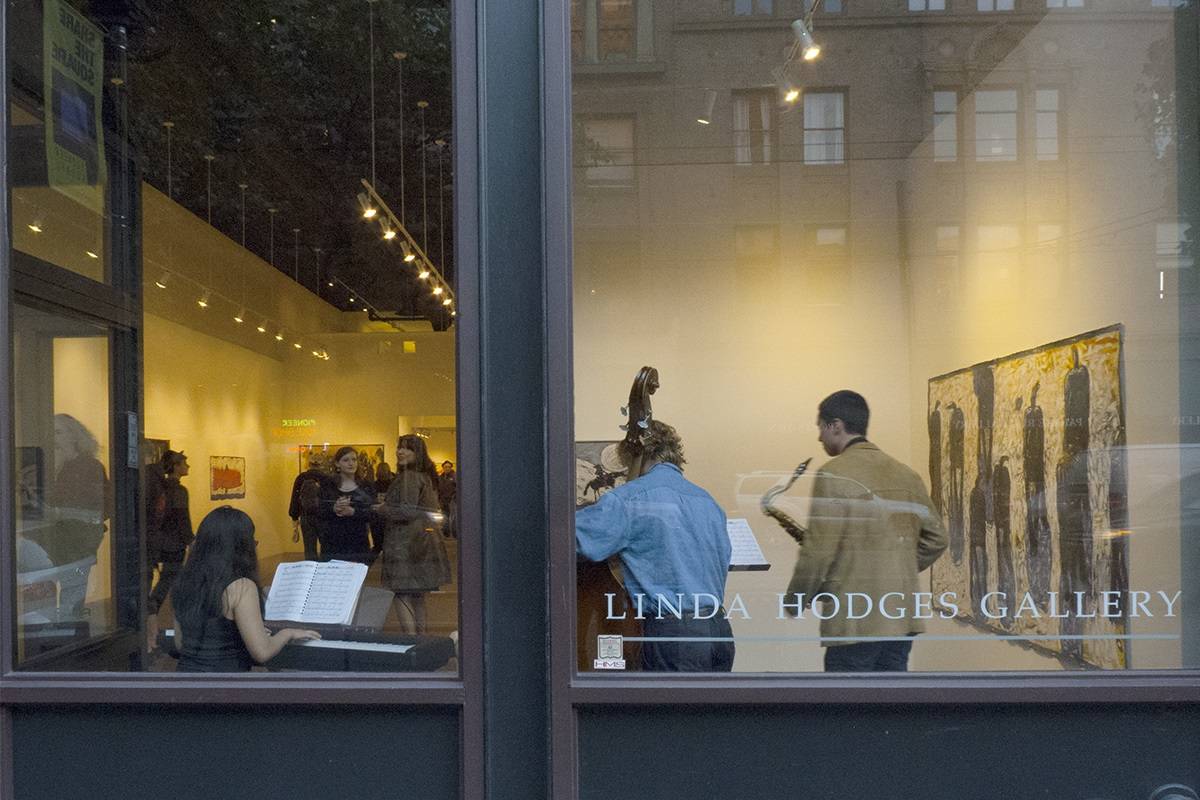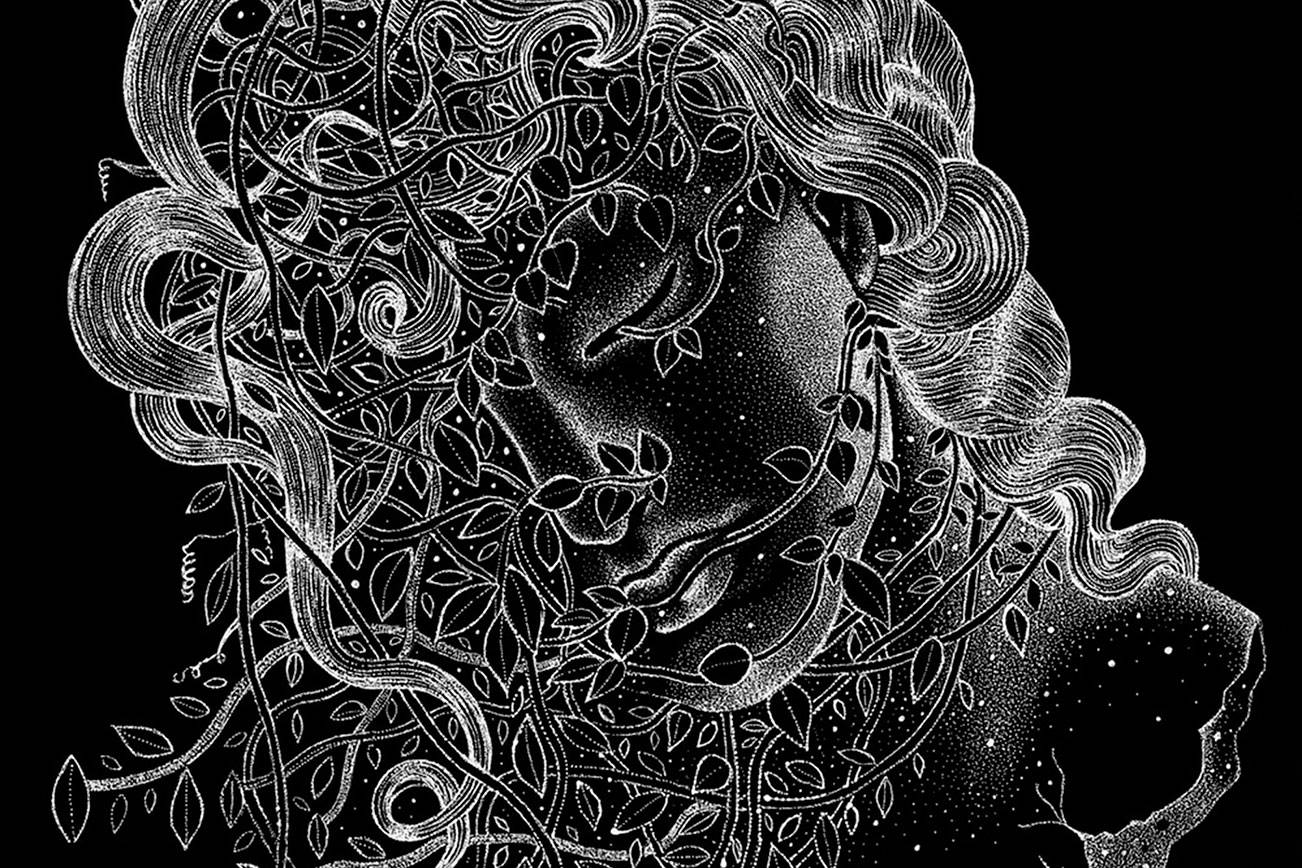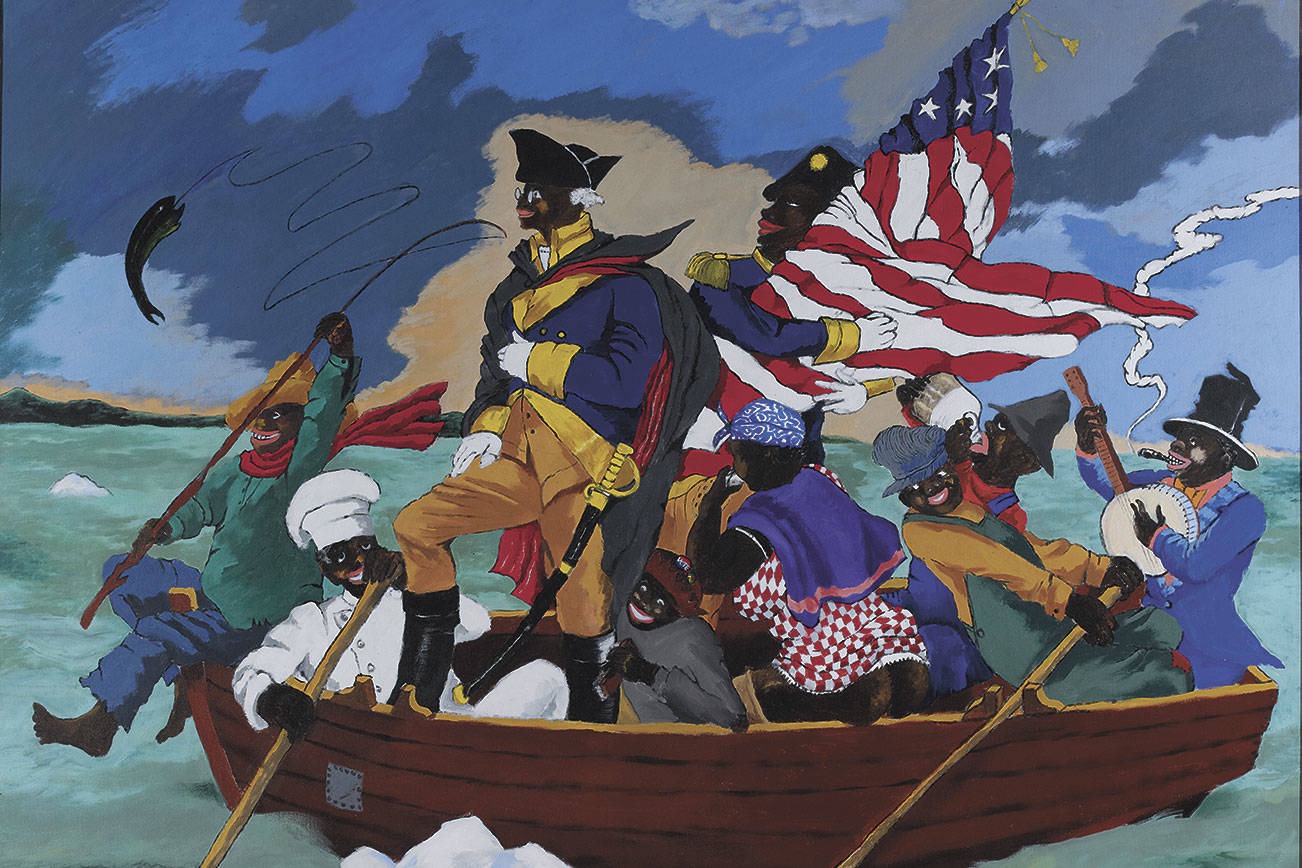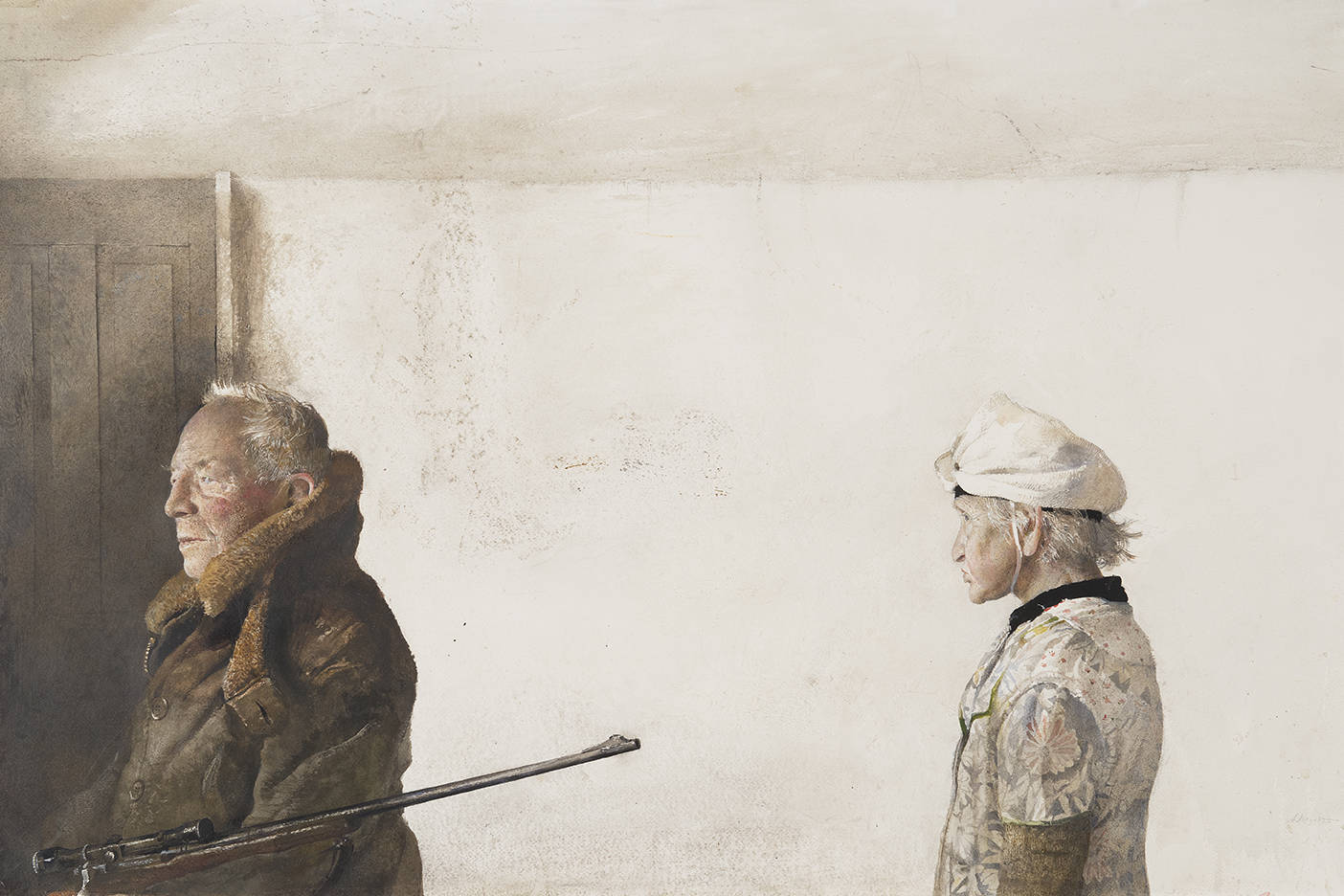Year by year, the Seattle Art Fair tweaks its programming and layouts for the better. Last year felt particularly polished. This time, with its fourth edition opening Thursday, Aug. 2, it looks to be coming into its own while emphasizing what it’s always been: a Paul Allen project.
Allen founded the Fair in 2015 to help raise Seattle’s profile in the art world. He didn’t want it to be “just another regional art fair,” as Max Fishko of Art Market Productions told me in a 2015 interview. Art Market co-produces the Fair with Allen’s own Vulcan Arts + Entertainment, and they have indeed created an event that is something of an outlier in the year-round art fair circuit.
Seattle Art Fair’s most notable difference is how it mingles bigwig dealers and emerging galleries, which are usually separated at other fairs, no matter how serious the latter may be. In a highly stratified market, the elite fair can be an efficient way of doing the business of art, but the Seattle model better suits a broader audience that doesn’t know a Motherwell from a Frankenthaler (and shouldn’t be faulted for it).
The Seattle audience itself also makes the fair a little different. One will observe that the gallerists and visitors occasionally bewilder each other, as the former may be accustomed to a more insular crowd and the latter may have never even set foot in a gallery before. It’s a boundary-pushing educational experience for everyone. And educating the local audience is, indeed, part of the Fair’s broader mission.
Of course, Allen didn’t get where he is by not watching the bottom line, and his fair is, like any other, a commercial event. He and a handful of other big collectors have clout enough to guarantee that some big galleries will show up, and the combined prestige of big collectors and big galleries entices many emerging galleries. It seems an excellent opportunity to raise a gallery’s profile, which can be critical in art’s stratified and competitive market. Meanwhile, visitors get to see a dense, but not too overwhelming, display of international art. Everybody wins, right?
Well, hopefully. Art fairs are a risky business for many galleries. The expense of the booth alone can be daunting even aside from the cost of shipping and staffing, not to mention the labor of designing and building one’s booth. Most will hope to at least break even at the fair, while cultivating future clients in the process.
The million-dollar question is whether there are enough clients here to support that goal. There is plenty of money in the PNW, but not everyone has caught the collecting bug. In the tech economy, Microsoft has distinguished itself with its significant and evolving corporate collection and high-profile collectors, including Allen, Jon Shirley, and Charles Simonyi. Meanwhile, the tech industry as a whole has been stereotyped as philistine, so ideologically driven by disruption that art and culture are treated as superfluous if they have even a whiff of tradition. Then there are the art-world stereotypes—say, the diffident, supercilious gallerist who won’t give you the time of day if you aren’t wearing the right shoes. Seattle Art Fair could be counted as a success if it can break down these barriers even a little.
To that end, the special programming at the Fair is shifting to meet tech-world interests, especially its fascination with outer space. This is a topic close to Allen’s heart: In addition to fine art, Allen is also an avid collector of models and artifacts from the space race and of sci-fi art (as anyone who’s visited Cinerama can attest).
Curated by artistic director Nato Thompson, this year’s special programming includes demos of Mark Pauline’s massive, somewhat horrifying machine puppets and a model of Trevor Paglen’s Orbital Reflector, a sculpture-cum-functionless satellite that will be launched into low earth orbit later this year. The Fair also recently announced a late addition: Chris Burden’s 1983 Scale Model of the Solar System. The installation accurately places planets at their relative distance, with the yellow orb of the sun suspended at Gagosian Gallery and (the now–dwarf planet) Pluto located all the way over at the Seattle Art Museum.
This highlights another significant change in programming this year: it has mostly moved indoors. In past years the Fair created plenty of satellite programming at venues outside its home base at CenturyLink Field Event Center. In 2016 and 2017, then–artistic director Laura Fried emphasized creating happenings and performances in and around Pioneer Square. Events encouraged visitors to reflect on place and history and to physically get out and see these places, and possibly other galleries and artist studios. It was an important gesture, but attendance was sparse. This year, things were further complicated by the ongoing streetcar debacle that has turned First Avenue inside-out (and put a terrible strain on galleries and other businesses there). As artistic director, Thompson has pivoted and withdrawn more into the comfort of the Event Center—and the comfort zone of the target audience.
This is not to say that audiences will be coddled. Talks organized by Thompson seek to unpack heady and fraught issues. One, facilitated by artist C. Davida Ingram, will feature six activists and scholars and focus on Seattle’s part in globalization. Three Anishinaabe women—performance-artist duo Charlene Vickers and Maria Hupfield and curator Wanda Nanibush—will discuss cultural specificity and how tradition and speculation about the future inform artistic practice.
In short, if one hasn’t attended the Seattle Art Fair yet, it’s worth going. If you have attended before, you will still see something different.
This leaves the question: What satellite events are planned? This year it’s a little more sparse. The big event in years past was Out of Sight, organized by Vital 5 Productions. That was always a big party, one that brought a nice anarchic counterpoint to the more staid fair, but its mastermind, Greg Lundgren, is working on another project in the Southwest.
For those looking for a wilder vibe, one’s best bet is the pop-up exhibition Vice & Virtue, organized by Treason Gallery at Piranha Shop, just a little south of the event center. That features work from 10 hip, international street artists, painters, and sculptors, several of whom are making their Seattle debut. For a significant survey of regional art, head to One Room, organized by studio e gallery in an unoccupied, street-level retail space in the Embassy Suites, just north of CenturyLink Field. This is an excellent stop for traveling collectors who want to get a look at local works but may not have the stamina for a walking gallery tour of Pioneer Square. It’s also ideal for those daunted by the Fair but who want to get in on the experience.
Speaking of which, Pauline’s monstrous puppets are too big to demo the inside of the Event Center. Instead, see them in the north plaza of CenturyLink Field four times this week, including a 5:30 p.m. show on Thursday night as the Fair opens officially to the public. It’s an apt metaphor for the Art Fair as a whole: larger than life, at times ungainly, boasting an enormous reach with one man at the center, yet still a spectacle worth seeing.
Seattle Art Fair
Aug 2–5 | CenturyLink Event Center | $35–$90
